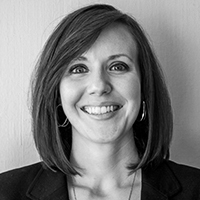Question
What is pediatric abusive head trauma (PAHT)?
Answer
Pediatric abusive head trauma describes a constellation of signs and symptoms resulting from violent shaking and impacting an infant's or small child's head. In mainstream media, this more often gets referred to as Shaken Baby Syndrome, but the medical terminology is pediatric abusive head trauma. This definition clearly states that this does not occur and is not caused by general play, falls from a couch, or other things of that nature. Pediatric abusive head trauma is one of the primary physical child abuse incidents that occur in early childhood.
PAHT in the News and Media
We first saw pediatric abusive head trauma come into the news and media in 1962. At that time, a physician named Dr. C. Henry Kempe was beginning to identify a connection between aggressive and neglectful parenting and long-term behavioral and mental health symptomology within children who were the recipients of that aggressive and neglectful parenting. Sometimes in the literature, it gets referred to as scary parenting, based on the idea that the caregiver is the source that the child is afraid of. We think about those consistent moments when caregivers are large and out of control.
As I mentioned, we don't see this constellation of pediatric abusive head trauma with somebody who fell off the couch. Also, we know that all parents get upset sometimes, and kids get yelled at. However, at the other end of the spectrum, the parent may be the person children are afraid of and cannot seek comfort from. Think about really exaggerated, aggressive behavior, including physical abuse, intense emotional abuse, and neglect. Also, keep in mind the intense interpretations of a parent about a child's intentions.
Dr. Kempe's study in 1962 began to categorize these symptoms as battered child syndrome. It was revolutionary for the early '60s to think that child abuse occurred in all types of homes and all types of environments. This was not just seen in families experiencing extreme poverty or only in families with single-caregiver homes. They saw this show up in lots of places regardless of socioeconomic status or kind of caregiving dynamics. This laid the initial foundation for child abuse laws and mandated reporting. When this study came out, the recognition of battered child syndrome prompted legislation to realize that something had to be done. They couldn't just leave things where they were. There needed to be a response to this aggressive and neglectful parenting that deeply impacted these children.
A paper published in 1972 proposed the idea that the brain, as an organ, could sustain injury from being thrown about. They categorized it as whiplash-shaken infant syndrome. It also identified a triad of symptoms observable by X-ray that may or may not accompany other signs and symptoms of abuse, including cerebral swelling and hemorrhaging. Imagine being in a car accident, busting your head open, and needing stitches. There may not be an external manifestation of what is clearly an internal injury.
In 1997, a British nanny was charged with the murder of an eight-month-old baby in relation to a series of symptoms that physicians and police called shaken baby syndrome. This case sparked a series of concerns and awareness from the greater US public about shaken baby syndrome and its potential impacts on children and child well-being. We see this evolution of language from battered child syndrome to whiplash shaken infant syndrome, to the concept of shaken baby syndrome, and, currently, pediatric abusive head trauma.
I was a child when this occurred and remember it fairly clearly because I had an infant cousin at that time. I remember my family being really cautious, more so than they had been in prior years, about who got to hold the baby and where they were standing or sitting when holding the baby. There was an increased awareness that something terrible might happen because of the increased conversations around shaken baby syndrome.
Within broader news media, there is increasing conversation about the role of investigation in child abuse reports. People are slowing down to ask, what is happening, and what is it that occurs in families when there is the experience of pediatric abusive head trauma? Current media is also highlighting that in previous years, people were quick to identify a "victim" and a "culprit" without allowing for the due diligence of an investigation that holds multiple outcomes as a possibility. It is rare to have clear evidence without proof of pediatric head trauma. It's unlikely we're going to catch it on camera. One of the things we are increasingly aware of is that some of the symptoms we begin to see in early pediatric abusive head trauma may be related to an event that occurred weeks or days prior and may not be the thing that happened most recently.
This Ask the Expert is an edited excerpt from the course Pediatric Abusive Head Trauma: Recognition, Prevention, and Long-term Impact, presented by Alison D. Peak, LCSW, IMH-E.
